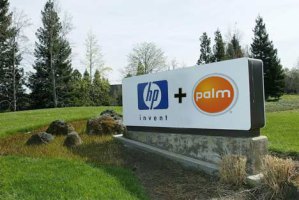
Hewlett-Packard—which is currently the world’s top PC maker—has announced that it has completed its $1.2 billion acquisition of Palm, meaning the smartphone maker is now part of one of the largest technology companies on the planet. Now that the takeover is complete, former Palm CEO Jon Rubinstein will head up HP’s Palm business unit and report to HP’s Personal Systems Group executive VP Todd Bradley, and be responsible for developing both the webOS software but also webOS-based hardware products, including smartphones but also netbooks and “slate PCs.”
“With HP’s full backing and global strengths, I’m confident that webOS will be able to reach its full potential,” Rubinstein said in a statement. “This agreement will accelerate the development of this incredible platform with new resources, scale and support from a world-respected brand.”
HP has said it plans to increase the $190 million Palm spends on research and development each year in order to leverage Palm’s webOS into other platforms. HP CEO Mark Hurd said in an investors’ conference call in May that the company is also looking at webOS for HP’s Web-connected printers that enable users to print important items—like maps and tickets—from smartphones and other Internet-connected mobile devices without needing a PC.
HP has not announced any specific webOS products or any timeframe for bringing webOS products to market. Back in January, Microsoft’s Steve Ballmer famously demonstrated the HP Slate—a tablet-based PC running Windows 7—at the Consumer Electronics Show in Las Vegas, in a move to establish the the Windows ecosystem had an answer to the Apple iPad. HP has since released promotional materials about the HP Slate, but the product has not shipped and reports have the company dropping Windows 7 from the product.


